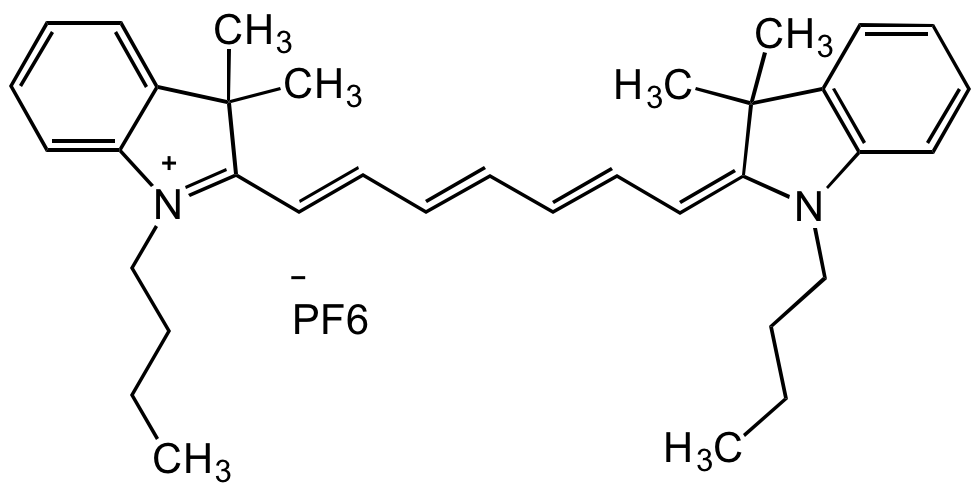
Chemical Structure
3,3-Diethyloxacarbocyanine iodide
CDX-D0180
CAS Number905-96-4
Product group Chemicals
Estimated Purity>98%
Molecular Weight460.31
Overview
- SupplierChemodex
- Product Name3,3-Diethyloxacarbocyanine iodide
- Delivery Days Customer10
- CAS Number905-96-4
- CertificationResearch Use Only
- Estimated Purity>98%
- Hazard InformationExcepted quantity
- Molecular FormulaC21H19IN2S
- Molecular Weight460.31
- Scientific Description3,3-Diethyloxacarbocyanine iodide is a cyanine based dye that has been used for measuring membrane potentials in bacteria. The green fluorescent dye forms red fluorescent aggregates with increasing membrane potential. The spectral shifting phenomenon has been exploited to measure membrane potential and analyze bacterial viability by flow cytometry ratiometrically. Spectral data: lambdamax 483nm (methanol); lambdaem 498nm (methanol). The dye has also been used as laser dye and in photosensitization of mitochondria and endoplastic recticulum in animals and plant cells. It may be used as a conjugate for labelling cells for cytofluorometry studies and in the imaging of carbon nanotubes(CNTs) using fluorescence microscopy. - Chemical. CAS: 905-96-4. Formula: C21H19IN2S. Molecular Weight: 460.31. 3,3-Diethyloxacarbocyanine iodide is a cyanine based dye that has been used for measuring membrane potentials in bacteria. The green fluorescent dye forms red fluorescent aggregates with increasing membrane potential. The spectral shifting phenomenon has been exploited to measure membrane potential and analyze bacterial viability by flow cytometry ratiometrically. Spectral data: lambdamax 483nm (methanol); lambdaem 498nm (methanol). The dye has also been used as laser dye and in photosensitization of mitochondria and endoplastic recticulum in animals and plant cells. It may be used as a conjugate for labelling cells for cytofluorometry studies and in the imaging of carbon nanotubes(CNTs) using fluorescence microscopy.
- SMILESCCN1/C(OC2=CC=CC=C12)=C\C=C\C3=[N+](CC)C4=CC=CC=C4O3.[I-]
- Storage InstructionRT
- UNSPSC41116134

